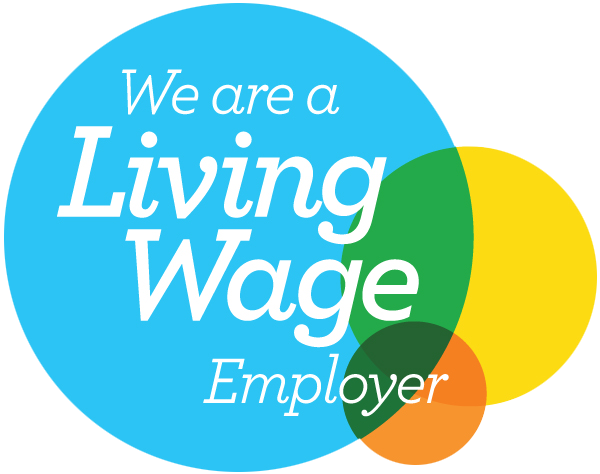
As we enter the next phase in the easing of lockdown, we look to what the ‘new normal’ will be for our working lives. Here we outline the key trends about the planned return to the office and the legal considerations for employers, discussed in our recent webinar with international law firm Gowling WLG.
As we analyse our progress along the roadmap out of lockdown and remote working in the long run, we must note the success of the vaccine programme that has enabled the continued easing of restrictions. Whilst the Prime Minister has urged everyone to “behave responsibly”, the excitement of being able to interact once again in defined settings may also be echoed in the anticipated return to the office. People who live alone or miss social interactions may welcome a return to the office.
Tuesday, 23rd March 2021 was a National Day of Reflection, marking a year since the country entered its first lockdown. Numerous lessons have been learnt in this time about how we can redefine how we traditionally work. We have been asking employers about their planned new ways of working since autumn and it’s been a hot topic in HR Groups too. We asked 131 organisations across a range of sectors from construction to the third sector about their planned office return. Most employers estimate the majority of people will not return to the office until after September 2021, with these numbers increasing over the summer.
When it comes to defining how much time employees will be expected to spend in the office, very few predict that this will be five days a week – even after all legal limits are set to be removed on 21 June.
There is less of a business case that employees need to be in the office to collaborate given experiences over the last 12 months. Most organisations expect employees to spend 60 per cent of their time in the office by the end of the year. The figures back up what employers have reported anecdotally in our HR Groups: that they hope employees will be in the office for two to three days a week by the autumn. Employers understand that there will be personal preference, with a few offering the opportunity to come in once a month purely to collaborate and ensure they have cohesive teams. This is particularly true for construction, where employers are even assessing whether all aspects of traditionally site-based jobs require employees to go into work.
Safety conscious
The return to the office is being carefully managed, with employers placing the onus on health and safety measures and managing capacity.
Employers are more cautious now than they were in September. The arrows represent where there has been an increase in employers opting for these measures. More are reporting that they will delay shielding employees’ return and provide shorter working days, with ‘Covid Wardens’ in place to help manage these measures.
Only a year ago, where only some employers offered a degree of flexibility, overnight employers had to offer working from home arrangements. Are we now looking at a hybrid way of working, with a combination of being in the office, home, or on site? Comments by the Chief Executive of Goldman Sachs about solely working from home being an ‘aberration’ have to be placed in context. This was specifically referring to their graduate cohort and new starters – questioning how to integrate them, enable their learning, mentor and collaborate when they all work remotely. However, there are tasks best undertaken at home to give people space to focus, meaning we will likely see an increase in the blended arrangements in place.
At the end of February, the Financial Times set out analysis around future working strategies, to explore how employers will move out of lockdown. Many organisations are setting up forums and working parties to engage with their workforce. PwC has surveyed its own workforce of 22,000 employees to define its future world of work and has driven engagement with the unveiling of its new flexible policy. Lloyds Banking Group successfully trialled a hybrid working model, as is Nationwide.
The pandemic has dispelled the myth that productivity falls at home. This was busted overnight by lockdown, as employees maintained their productivity levels and ensured they could deliver business models remotely in very different environments. Employers are keen to capitalise on learnings over the last 12 months.
46 per cent of employees in a YouGov survey reported that they’re happier working from home. This may be because they don’t have to do a long commute, they get to see more of their family and it allows them to engage more with their hobbies. However, the downside is 30 per cent of people sense that their hours of work have increased. A natural divide doesn’t exist anymore between work and home. 52 per cent don’t take the breaks they would normally, as there are fewer natural breaks in the day. With fewer catch ups and social interactions with colleagues, this has an impact on wellbeing. Meeting rooms have moved to our desks through Zoom or Microsoft Teams, explaining how 53 per cent feel the need to be available at all times. If an organisation is moving to a hybrid model, employers must carefully consider how people can be fulfilled with a blended approach.
Offices still present the opportunity to engage with people you might not work with directly, share problems and find solutions naturally. Where tasks require creativity, teams may want to collaborate face to face. Whilst some employers are thinking about reducing their office footprint, with HSBC talking about not renewing leases coming up for renewal and BT reducing office space too, others are considering moving to hot desking arrangements. For those giving employees a flexible choice, it may be a mixed space. By engaging directly with individuals, you can understand what works best for your people. Central to this is more empathic leadership, tailoring the support to the individual:
Maynard Webb, Former COO of eBay
Active listening is crucial as employers grapple with the multitude of considerations around what is their ‘new normal’. Employers will be considering how to keep people engaged and avoid adverse impact on the culture of their organisation. Many of us are social creatures who want to be with other people. Organisations should also be alive to the risk of a two-tier workforce with the hybrid working model, creating a divide between those who must or choose to come into the office with those who predominantly want to be based at home. Front line workers and those coming back from furlough should also not feel second class or that they are getting the raw deal. Engage with workers where they don’t have flexibility – a lot of this will come through effective line manager conversations.
At the heart of the new normal should lie fairness. From a financial perspective, according to research by the Institute of Fiscal Studies, those more likely to be able to work from home are on higher incomes and women have been adversely impacted by taking on the brunt of childcare and housework in general. Employers must find a way of remedying that. Younger workers may also find it difficult to have a suitable remote working environment. Following the Disability Act 1996, employers worked hard to make adjustments to accommodate everyone. Some working set-ups may make it harder to accommodate invisible disability, such as ADHD and autism. The idea of a fully flexible working environment may not suit these individuals who need space and quiet. Some may require a fixed desk.
Equally, in 2014 when the law changed in relation to flexible working requests and employees did not need to specify why they wanted to work flexibly; employers braced themselves for a floodgate of requests which did not materialise. Here it is different – everyone has experienced flexible working and might want to continue some aspects of their working arrangements from the last 12 months. These requests must be balanced with employees’ rights under the Equality Act. Not assessing each request fairly may lead to direct discrimination claims – for male employees or indirect discrimination for female employees if they are adversely affected by their request being refused.
In terms of performance management in 2021, some are suggesting that businesses should wipe the slate clean. These are not normal circumstances for people. Managers need to be trained and confident to manage a hybrid workforce. They must ensure people are not impeded in their career development and not curtailed by hybrid working practices.
Key things to consider in terms of process and policy:
Key legislation affecting employer decisions right now to achieve legal compliance:
It is likely that location premiums will be removed if you can work from anywhere. Employees may be prepared to take a pay cut if there’s a saving to them by not having to commute. The employer can access a wider talent pool and may take advantage of virtual platforms to collaborate in socially diverse ways if they don’t have an office. In terms of practical considerations, when it comes to varying pay, contracts need employees’ express agreement to revise. The possible dismissal and re-engagement route of varying pay is being threatened by a claim lodged by the union Usdaw in Scotland to curtail Tesco’s freedom to implement pay reductions through this method which resulted in an injunction.
This issue seems to be on every agenda. The workforce of the future is not passive in this area – they are actively challenging the agenda. Employers wanting to engage and attract future talent need to demonstrate their credentials and take ideas from their existing workforce to embed this in their culture.
There is an organisation called the Chancery Lane Project, dedicated to encouraging lawyers to adopt new policies to support climate change. It suggests that contracts and policies should make provision for commitment to carbon neutrality and for client sabbaticals – paid leave where you give employees the option to go off and work on projects dedicated to the environment. It is also trying to introduce policies around sustainable commuting and reducing business travel, whilst also looking at uniforms, discouraging fast fashion and helping companies achieve a sustainable way of working.
Our thanks go to Gowling WLG and Legal Director Anna Fletcher who we partnered with on our webinar to explore and define the ‘new normal’ going forward. Contact us today if we can help you plan your office return and drive employee engagement across your organisation, regardless of where your people are based. When it comes to questions of pay and benefits and how to tailor these to your organisation, we can advise you on how to future-proof your reward strategy for fully remote, hybrid or office-based workforces.

Managing Director
Tim is a passionate HR specialist with over 20 years’ experience in pay and reward. As a director of Paydata, Tim has worked with thousands of satis...
22 April 2021
Inflation 0.7% March 2021 Employment 32.4M down 1...
19 April 2021
Your approach to reward is crucial when it comes to retaining talented individuals and driving perfo...
12 April 2021
11.4 million jobs were furloughed as of March 2021 and with announcements of pay freezes and rising ...
Sign up for briefings on pay benchmarking, salary surveys, reward strategy and statistical updates.
sign up for updates
© Paydata Ltd 2025 All rights reserved.
Registered in England no: 3632206
VAT no: 728 0808 28
Paydata Ltd, 24 Commerce Road, Lynch Wood, Peterborough, Cambridgeshire, PE2 6LR

